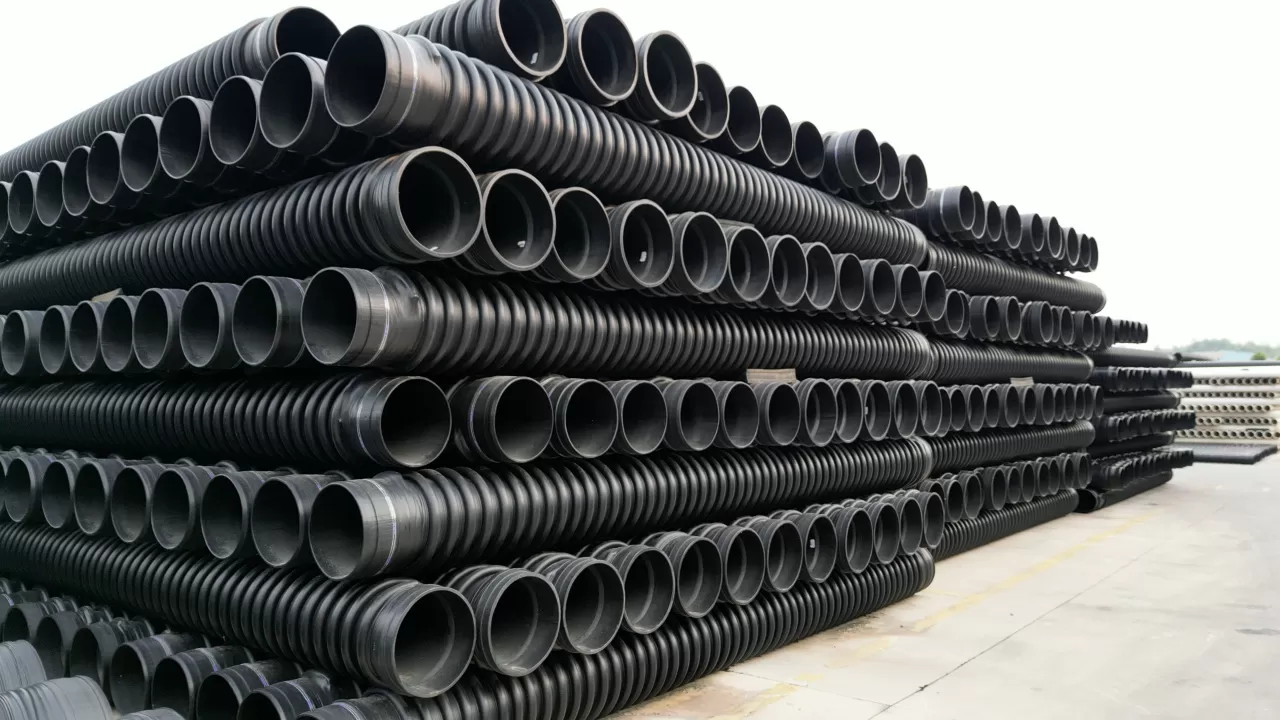Carat pipe (HDPE winding structure wall pipe) is the mainstream pipe material of municipal drainage and water conservancy projects, and its connection method directly affects the sealing, pressure bearing capacity and construction efficiency of the pipeline system. According to engineering practice, carat pipe mainly adopts two processes of rubber ring socket connection and socket type electric fusion connection. The two have their own characteristics in technical principle, applicable scenarios and construction requirements, and need to be scientifically selected in combination with specific working conditions. First, rubber ring socket connection: economic choice of flexible seal Technical principle:
rubber ring socket connection By installing high-performance rubber sealing ring (commonly used EPDM or NBR material) at the end of the pipe socket, the mechanical cooperation between the groove on the inner wall of the socket and the flange of the socket is used to achieve sealing. During construction, align the pipe socket with the socket and push it in through manual hoist or hydraulic jack to compress the rubber ring to form a sealed interface, which belongs to the category of flexible connection. Applicable Scenario:
Pipe Diameter Range: Nominal Diameter DN300-DN1200, especially suitable for medium and small diameter drainage pipeline system. Working Condition Characteristics: Suitable for areas with complex geological conditions (such as soft soil foundation, seasonal frozen soil area) or slight uneven settlement. It can absorb pipeline displacement through the elastic deformation of the rubber ring and avoid interface cracking. Construction Advantages: Low Cost: Single interface material cost is about 8-15 yuan, no additional power equipment is required; High Efficiency: Single interface construction time is about 10-20 minutes, suitable for large-scale rapid laying; Strong Flexibility: It can be constructed in narrow space or in a power-free environment. Technical points:
rubber ring compression rate needs to be controlled at 30% -40%, before installation need to check the rubber ring without damage, no aging; socket insertion depth needs to comply with the design marking line, to avoid leakage due to insufficient insertion; after the construction is completed, a closed water test is required (test pressure 0.02MPa, holding pressure for 30 minutes without leakage). Second, socket electric fusion connection: high-strength solution of rigid welding Technical principle: electric fusion connection relies on electric fusion welding machine and electric fusion sleeve (polyethylene sleeve with inner wall prefabricated resistance wire), through power to make the resistance wire heat up, melt the PE material at the pipe interface, and form an integrated welding interface after cooling, which belongs to rigid connection. The process takes advantage of the hot melt characteristics of PE materials to achieve molecular bonding, and the interface strength can reach more than 90% of the base material.
Applicable Scenario:
Pipe Diameter Range: DN600 and above large-diameter pipelines (such as dn1600 water transmission trunk), or scenes with high requirements for sealing and pressure-bearing capacity (such as pressure pipeline system, working pressure 0.8-1 MPa). Working Conditions Characteristics: Suitable for high-pressure water transportation, industrial wastewater transportation and other projects that require strict interface strength, or areas with complex terrain and high risk of pipeline displacement (such as river crossing and embankment crossing). Construction advantages: Excellent sealing: The interface anti-leakage grade is IP69K, which can resist high water pressure and long-term immersion; Strong mechanical properties: negative pressure resistance of 0.08MPa, suitable for vacuum drainage system; High degree of automation: Welding machine automatically controls voltage and time parameters to reduce human operation errors.
Technical points:
The end face of the pipe needs to be flat and vertical (vertical error Pipe diameter and pressure requirements: DN300-DN1200, no pressure or low pressure drainage scene (0.6MPa) preferred rubber ring socket; DN600 above, high pressure system (0.8MPa) or important projects (such as drinking water transportation) recommended to use electrofusion connection. Environmental conditions: no power supply or remote site, rubber ring socket is more convenient; cold areas (-10 ℃ below) need to be equipped with preheating equipment for electrofusion connection, while rubber ring socket need to pay attention to the low temperature brittle problem of rubber. Balance of cost and efficiency: rubber ring socket low comprehensive cost electrofusion connection initial equipment investment is high, but long-term reliability advantages are significant, suitable for large-scale projects. Industry practice and quality control
In short, the choice of carat pipe connection mode needs to comprehensively consider the size of the pipe diameter, pressure level, geological conditions and construction resources. Through scientific selection and standardized operation, the corrosion resistance and flexibility advantages of HDPE pipes can be maximized to ensure the long-term safe operation of the municipal pipe network.


